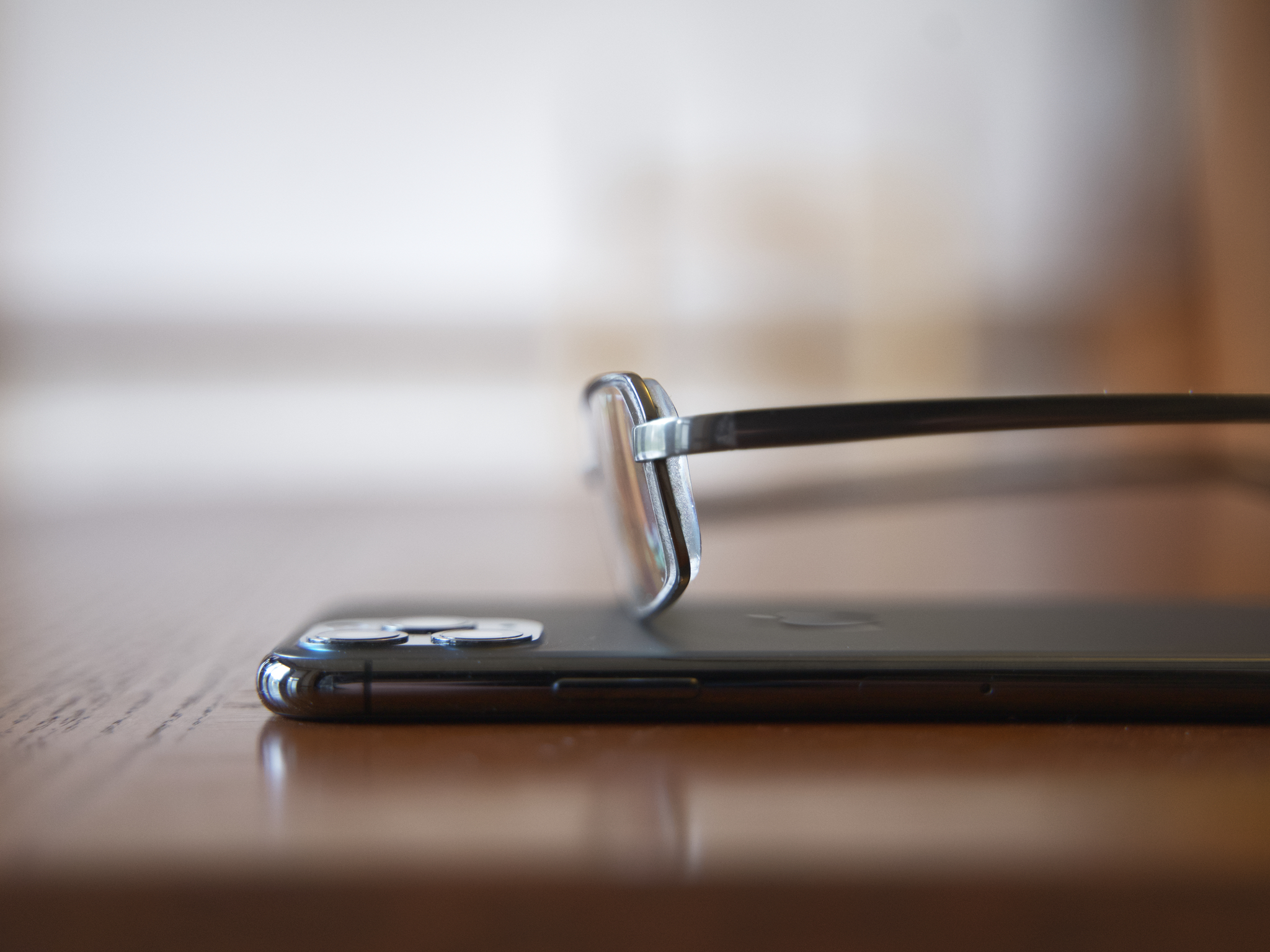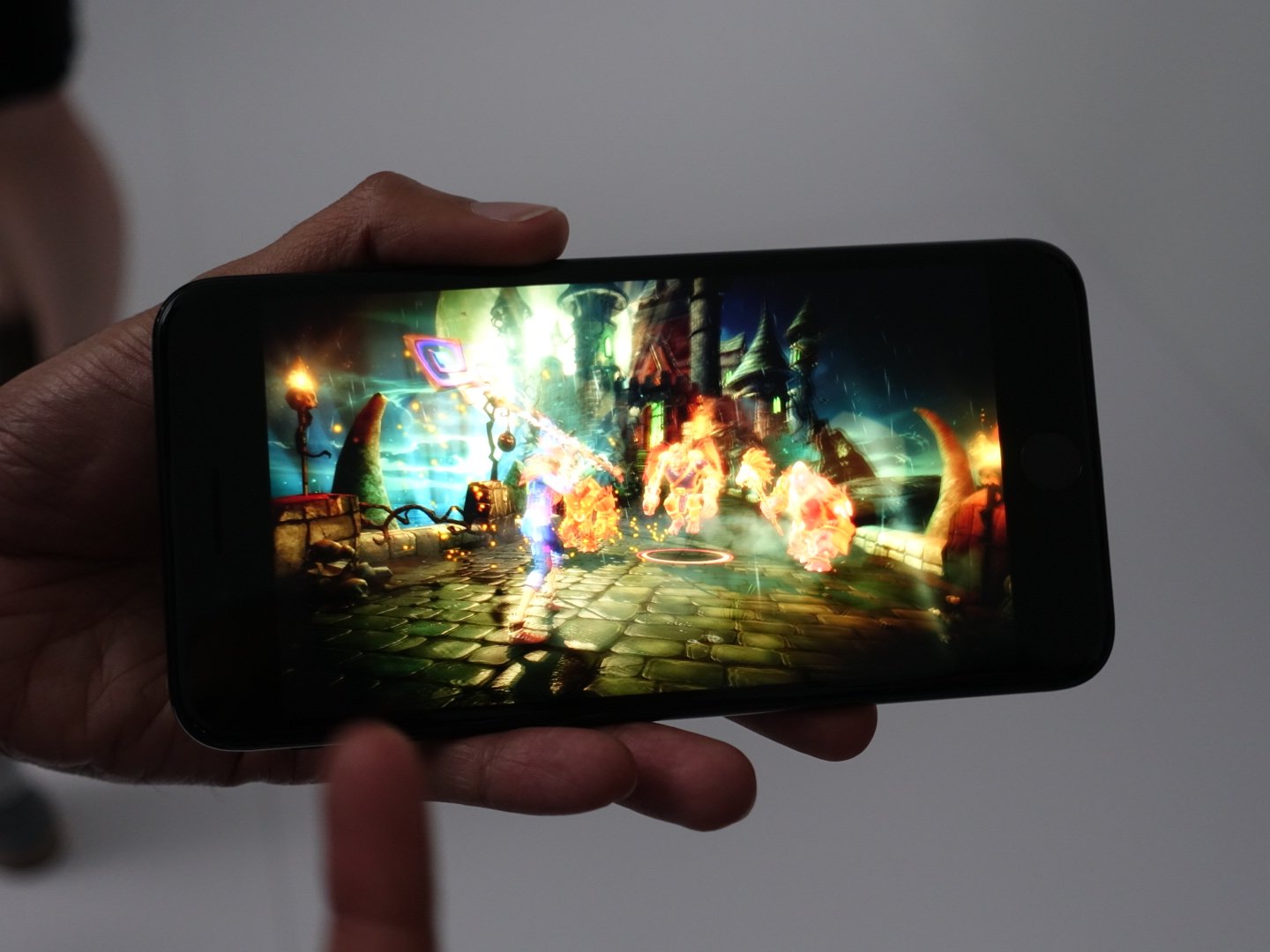Apple Glass rumors: Everything you need to know

Rumors abound that alongside an Apple VR headset, Apple will also release a set of lightweight augmented reality glasses in the future. So what will they look like? How much will they cost? And when will they be released? Here's everything we've heard about Apple Glass so far.
Name
Much of our information comes by way of a huge leak from Jon Prosser, who last year reported on the potential name, price, design, features, and more. The rumor is that Apple's AR glasses will simply be called 'Apple Glass'. It sounds simple, and "Apple enough", we love it.
What exactly are they?
There have been plenty of rumors in 2021 of an upcoming Apple VR headset. This is not that. Multiple reports indicate Apple is working on two separate AR and VR projects. From Bloomberg's Mark Gurman:
...and what grew into a 1,000-strong group of engineers went to work developing two products aimed at upending the VR and AR segments. A device code-named N301 would take the best of both VR and AR—the first an all-encompassing digital experience for gaming and consuming content, and the second a tool for overlaying information such as text messages and maps in front of a viewer. The other device, N421, a lightweight pair of glasses using AR only, is more complex.
Apple Glass will reportedly be a lightweight pair of glasses for notifications and AR applications like directions.
Release date
We've heard multiple conflicting reports about a potential Apple Glass release. Jon Prosser says that Apple had planned to announce Apple Glass as early as the end of last year, or perhaps in the first quarter of 2021 at a March event. However, this would be several months or maybe a year before release, with public availability not set until the end of 2021 or 2022. This lines up with reports from supply chain analyst Ming-Chi Kuo stating Apple Glass could be available from 2022. Mark Gurman, however, says Apple Glass is coming in 2023 "at the earliest."
Design
Prosser states that Apple Glass is designed to look like a pair of regular glasses, which means you'll only be able to tell they're digital if you're wearing them. In an off-the-cuff remark on a podcast, Prosser also stated Apple may be planning a 'Steve Jobs Heritage Edition' of its glasses with frames that reflect those worn by Apple's famed founder. Reports suggest Apple Glass have a plastic frame, but that Apple could go for metal, or another material, in the final iteration.
Price
Prosser also stated Apple Glass will cost "just" $499 plus the price of your prescription. You will also reportedly need to be an iPhone user, as Apple Glass will take information from the iPhone, much like Apple Watch.
iMore offers spot-on advice and guidance from our team of experts, with decades of Apple device experience to lean on. Learn more with iMore!
Features
Apple Glass will reportedly use a user interface called 'Starboard'. They will also feature a camera/LiDAR sensor, with a heavy focus on scanning proprietary Apple QR codes. They will also be charged wirelessly through a stand that's included.
A history
Rumors of Apple Glasses have persisted for some time. Here's a history of each report we've heard previously.
Augmented Reality (AR) or Mixed Reality is different than Virtual Reality (VR). Rather than being immersed in a fully-rendered world, AR/MR layers data on top of the real world. Right now, Apple's efforts are focused on ARKit, its platform for hundreds of millions of iPhone and iPad users. But Apple doesn't see AR as a single product, like Microsoft's HoloLens or Snap's Spectacles. Apple sees AR as a core technology that will be part of many products coming in the future. Just like LCD and OLED are part of many products today. And that might just include Apple Glasses.
March 8, 2019: Apple Glasses could be coming as soon as 2020
Kuo Ming-Chi (Romanized Guo Minghao in the text below) is back with some supply-chain exfiltrated guesses as to when we might see augmented reality (AR) glasses from Apple.
From Economic Daily News:
Guo Minghao, an analyst at Tianfeng International Securities, issued a report stating that Augmented Reality (AR) is one of the key businesses for Apple's future growth. He believes that Apple will become a leader in the field of augmented reality, mainly because it requires huge investment, software and hardware integration capabilities, and design innovative human-computer interaction capabilities.Guo Minghao also expects that Apple's first-generation head-mounted AR device will be mass-produced in the fourth quarter of this year to the second quarter of next year, which will be an important milestone in the commercialization of augmented reality.Taking into account the technical limitations, Guo Minghao pointed out that the Apple AR device will be integrated with the iPhone, the iPhone is responsible for computing, networking, indoor positioning and outdoor positioning, and the head-mounted AR device plays the display role.
It's going to be an ugly transition, but it's going to be a magnificent completion.
August 29, 2018: Akonia Holographics is Apple's latest augmented reality acquisition
Tim Cook, Apple's CEO, has been publicly bullish about augmented reality (AR) for a couple of years now. So, while the grand scope of Apple's AR plans still aren't being discussed, that the company is moving boldly into more and more portable, personal, and, yes, wearable technology comes as no surprise.
From Reuters:
Apple Inc has acquired a startup focused on making lenses for augmented reality glasses, the company confirmed on Wednesday, a signal Apple has ambitions to make a wearable device that would superimpose digital information on the real world.Apple confirmed it acquired Longmont, Colorado-based Akonia Holographics. "Apple buys smaller companies from time to time, and we generally don't discuss our purpose or plans," the iPhone maker said in a statement.
Remember all those sci-fi movies where the enhanced or cybernetic character would "see" data superimposed on the real world?
That, but real.
August 15, 2018: Apple Reality Glasses rumored for release in 2020
Apple supply-chain exfiltrator and TF International Securities analyst Kuo Ming-Chi is back with some new rumors surrounding a potential release window for Apple's augmented reality (AR) glasses:
- Sometime in 2020.
If Apple keeps up the pace of ARKit development, we should be on version 4.x by then, as well as heading towards Apple Watch Series 6. Will that be enough augmented reality prowess and wearable power to light up Apple's vision product? We'll have to wait and see.
November 21, 2017: Apple reportedly acquires Vrvana and its 'extended reality' headset
According to TechCrunch
As Apple reportedly ramps up work to ship an augmented reality headset in 2020, it has acquired a startup from Montreal, Canada that could help it get there. TechCrunch has learned that Apple has acquired Vrvana, maker of the Totem headset — which had rave reviews but never shipped. The deal was for around $30 million, two sources tell TechCrunch.
Embarrassingly, even though they're in my hometown, I hadn't heard of Vrvana.
The only product that Vrvana shows off on its site is the unreleased Totem headset, an "extended reality" device utilizing key technologies from both AR and virtual reality to allow for both experiences on a single headset.
Be interesting to see how, if at all directly, any of Vrvana's tech makes it into shipping Apple products.
November 8, 2017: Apple rumored to be pushing for AR glasses by 2020
Apple glasses are the next hot thing, according to the rumor mills, and now comes word that Apple is speeding up its efforts to get glasses — and a new SiP and rOS to power them — off the ground and onto our faces as early as 2020.
Mark Gurman, writing for Bloomberg:
As with previous products, Apple isn't waiting around for someone else to create a chip capable of powering its AR headset. It's designing one in-house that's similar in concept to the "system-on-a-package" component in the Apple Watch. Such chips can squeeze more components -- graphics processors, AI chip, CPU -- into a smaller area than standard processors; they also consume less power.The new operating system, internally dubbed "rOS" for "reality operating system," is based on iOS, the iPhone's operating system. Just as tvOS powers the Apple TV, macOS runs on Macs and watchOS runs on Apple Watches, "rOS" will power Apple's AR headset. Geoff Stahl, formerly a software manager for games and graphics at Apple, is one of the directors of the "rOS" software group.
It's uncertain anything can or will success iPhone in terms of popularity or revenue in the short term. It was the perfect confluence of product and timing. But several next-generation products could augment and eventually replace iPhone as a product. That includes all the technology we're seeing today in Apple Watch and AirPods, and eventually in products like glasses.
Using an Apple Watch-like system-in-package allows for power and wearable portability. Basing rOS on iOS — like watchOS and tvOS were — allows for maximum efficiency and compatibility.
AirPods are already a compelling augmented reality wearable for audio. All the pieces are in place for Apple to do the same for AR video. The company just needs the time and technology to bring it to market at scale.
October 10, 2017: Cook: The technology does not yet exist for Apple Glasses
Apple has been working on a "glasses"-type augmented reality display for a while, according to rumors. An actual shipping product is still a ways off, though, according to Apple CEO, Tim Cook.
Speaking to The Independant:
"There are rumours and stuff about companies working on those – we obviously don't talk about what we're working on," Cook says. (Patents have shown that Apple is at least looking into such wearables, and reports have suggested that the ARKit introduction on the iPhone is partly a way to help build that interest and ecosystem.)"But today I can tell you the technology itself doesn't exist to do that in a quality way. The display technology required, as well as putting enough stuff around your face – there's huge challenges with that."The field of view, the quality of the display itself, it's not there yet," he says. And as with all of its products, Apple will only ship something if it feels it can do it "in a quality way"."We don't give a rat's about being first, we want to be the best, and give people a great experience," he says. "But now anything you would se on the market any time soon would not be something any of us would be satisfied with. Nor do I think the vast majority of people would be satisfied."
Cook remains incredibly bullish on AR in general, of course. Apple launched ARKit for developers back in June and ARKit-powered apps launched to hundreds of millions of iPhone and iPad users in September. He believes the impact of AR will be dramatic and likened it to the advent of mobile apps on Apple's App Store.
It'll simply be a while still before the AR experience moves from our hands to our faces.
June 3, 2017: Rumor claims Apple AR glasses postponed, potentially canceled
Google had glass, which was more personal display than AR. Microsoft has HoloLens. Snapchat has spectacles. And Apple? While rumors have suggested Apple was working on glasses of its own, a new supply chain AMA suggests that product might have been pushed back — or even killed entirely.
From Reddit
65% Project Mirrorshades / Iris will be cancelled. It's a very unique design, if it can be done properly it will be like what the iPhone 10 years ago.Rough bill of materials of Project Mirrorshades - Apple Iris. Note Iris is Siri backwards. Kopin NED Acetate frame Polarisized or prescription lens with Zeiss smart optics Bone conduction modules Microphones (noise cancellation) Light sensor Accelerometer for step tracking and head movement app navigation Magnetometer for navigation Capacitive Pavel Ceramic battery Apple chipset Charging circuit BL5 Induction module
Apple will likely introduce AR through iPhone or iPad, perhaps using Pokémon Go as a demo, long before we see glasses. But, AR is a long game for Apple, so we'll also have to wait and see where the technology takes them. And us.
April 20, 2017: Apple health and safety reports hints at Glasses
At some point having to hold a phone in your hand becomes less convenient than simply putting on a pair of glasses or contacts or otherwise intercepting and altering the photons going into your eyes.
Gizmodo got its hands on an Environmental Health and Safety report in April 2017 that seemingly implies employees have been testing some sort of AR or VR unit.
One report on February 21 that included "medical treatment beyond first aid," involved a prototype unit at Apple's De Anza office in Cupertino. "After BT4 user study, user advised study lead, that she experienced discomfort in her eye and said she was able to see the laser flash at several points during the study. Study lead referred her to optometrist and secured prototype unit for analysis." In another report, an employee working at Apple's Vallco Parkway office in Cupertino reported eye pain on March 2. "Employee reported eye pain after working with new prototype, thought it may be associated with use. He noticed that the security seal on the magenta (outer) case had been broken and had thought the unit may have been tampered with." A source inside Apple speculated that this injury may have something to do with an augmented reality product Apple may be testing, something like glasses with an overhead display.
Apple has the resources to explore any product it wants to, so this is the kind of surprising that isn't. We'll just have to wait and see if it starts moving into production any time soon or simply remains an exploration for a good long while.
March 27, 2017: Apple began building its Glasses team over a year ago
This is how Apple rolls.
The Financial Times, on :
Apple first began to build a team to examine the feasibility of a head-worn device more than a year ago. Now, it is devoting more resources to its augmented-reality efforts, with the aim of taking it from a science project towards a consumer product, according to people familiar with the company's plans. However, any launch is still at least a year away, perhaps much longer. Apple declined to comment.As its engineers have become more adept at miniaturisation technology with products such as its AirPods wireless headphones and the iPad's Pencil, AR seems to have overtaken Apple's secretive car project as the company's top priority for its next big launch, beyond the iPhone.
Spoiler: Apple's special project group works on multiple projects at once and priorities change depending on how far along a project is and how Apple feels it can make a difference in the market.
November 14, 2016: Apple weighing expansion into digital glasses
Apple Inc. is weighing an expansion into digital glasses, a risky but potentially lucrative area of wearable computing, according to people familiar with the matter.While still in an exploration phase, the device would connect wirelessly to iPhones, show images and other information in the wearer's field of vision, and may use augmented reality, the people said. They asked not to be identified speaking about a secret project.
It'd be a bigger shock at this point if Apple wasn't exploring Glasses.


Stephen Warwick has written about Apple for five years at iMore and previously elsewhere. He covers all of iMore's latest breaking news regarding all of Apple's products and services, both hardware and software. Stephen has interviewed industry experts in a range of fields including finance, litigation, security, and more. He also specializes in curating and reviewing audio hardware and has experience beyond journalism in sound engineering, production, and design.
Before becoming a writer Stephen studied Ancient History at University and also worked at Apple for more than two years. Stephen is also a host on the iMore show, a weekly podcast recorded live that discusses the latest in breaking Apple news, as well as featuring fun trivia about all things Apple. Follow him on Twitter @stephenwarwick9
